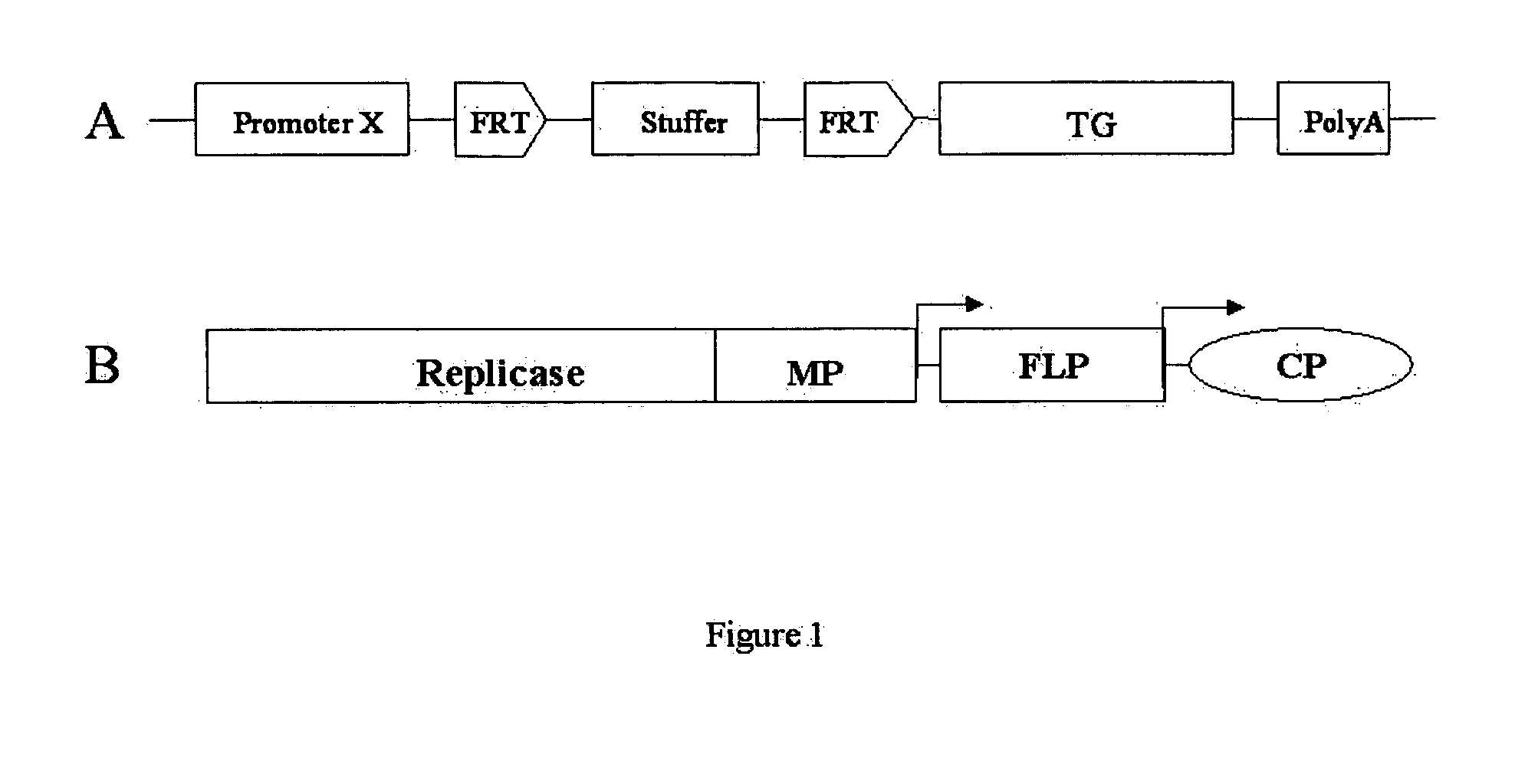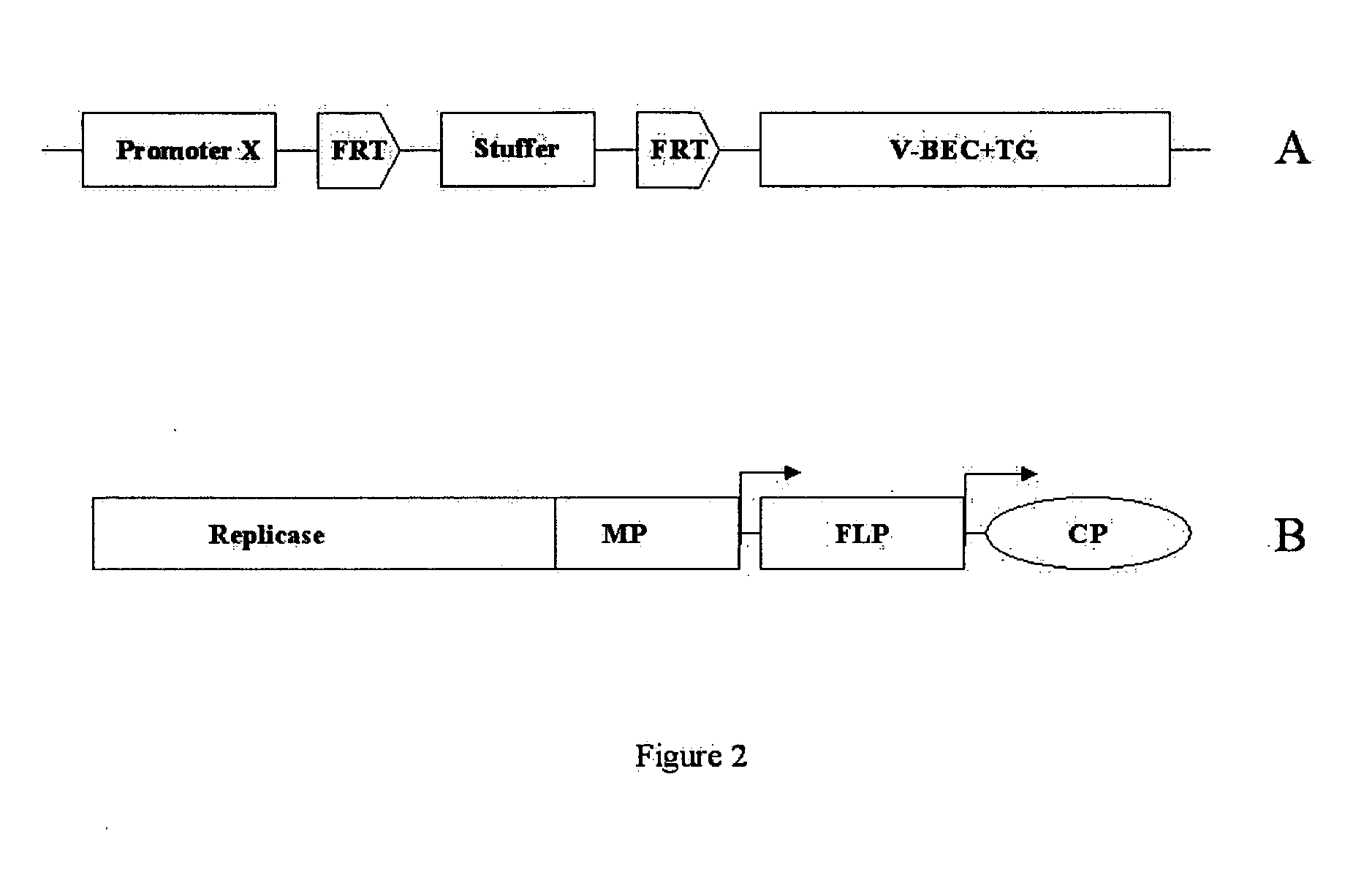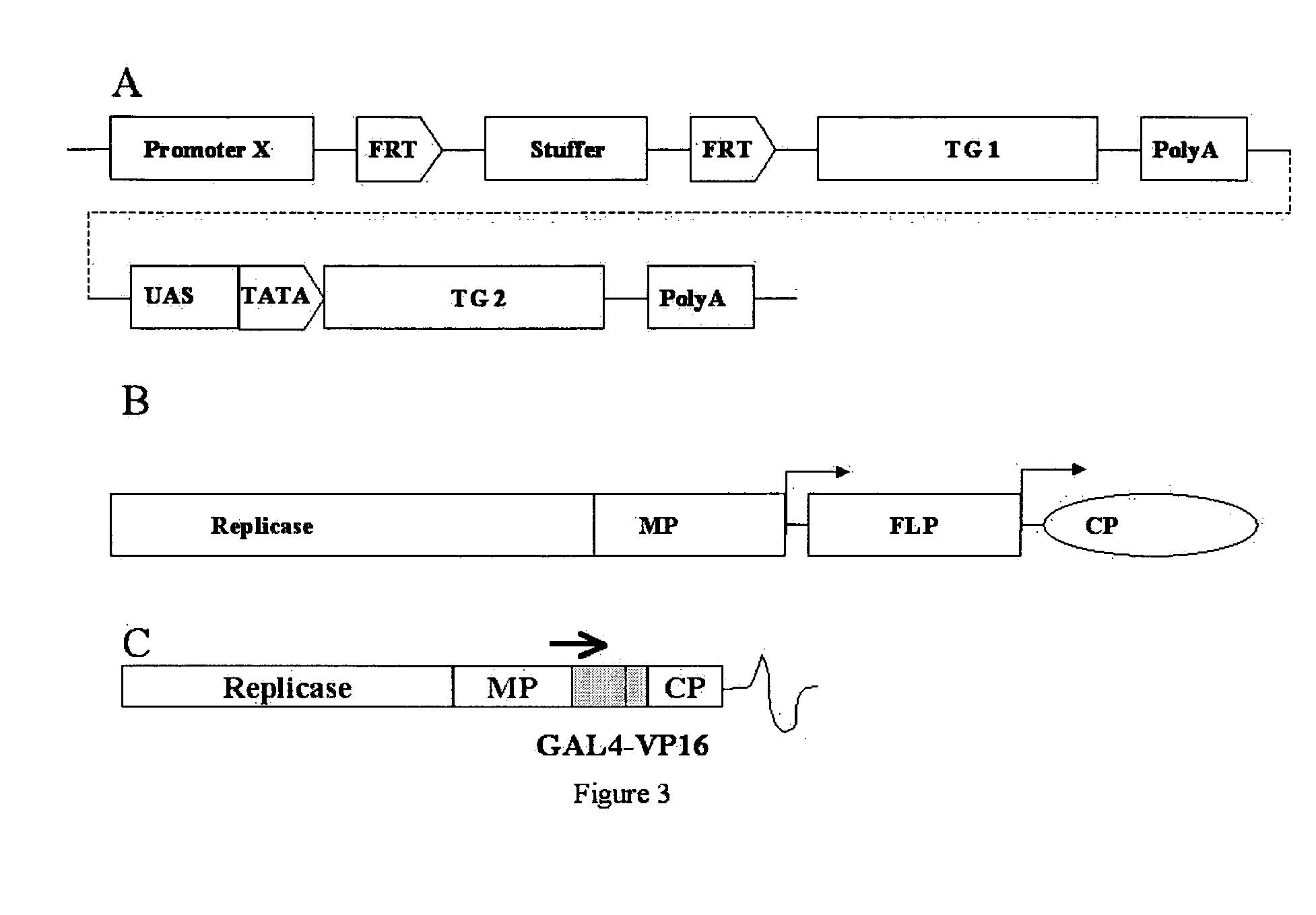Expression of foreign sequences in plants using transactivation system
a transactivation system and foreign sequence technology, applied in the field of protein expression and molecular biology, can solve the problems of affecting the host plant, not always satisfying the requirement for high protein expression, and unable to directly express recombinant proteins in transgenic plants,
- Summary
- Abstract
- Description
- Claims
- Application Information
AI Technical Summary
Benefits of technology
Problems solved by technology
Method used
Image
Examples
example 1
FLP Recombinase Mediated Transactivation of Inactive Transgenes in Cells
[0066] Construction of FLP encoding viral vector and activation of silenced GUS gene in plant cells were carried out as described in the paragraphs below. (For silencing or inactivation of the GUS gene in plant cells a transformation cassette in which the GUS gene was separated from CaMV 35S RNA promoter by the FRT flanked neo sequence or the stuffer sequence as schematically shown in FIG. 1A was used. [0067] 1. Engineering of virus constructs containing FLP recombinase. A open reading frame of yeast recombinase FLP is PCR-amplified from pJFLO plasmid (Luo H, Lyznik L A, Gidoni D, Hodges T K. 2000 FLP-mediated recombination for use in hybrid plant production. Plant J. 23:423-30) using 5′CGC GGA TTC AAT TAA TTA TGC CAC AAT TTG GTA TAT TAT G3′ (SEQ ID NO:2) and 5′CCA CTC GAG TTA TAT GCG TCT ATT TAT GTA G3′ (SEQ ID NO:3) as 5′ and 3′ primers, respectively. BamHI and PacI restriction sites at the 5′ and XhoI at the...
example 2
GAL4-VP16 Mediated Transactivation of Inactive Transgenes in Cells
GAL4-VP16 Trans-Activator System
DNA Constructs:
[0079] The vector pET-15 GAL4-VP16 UASmGFP5ER encodes the GAL4-VP16 gene-fusion. GAL4-VP16 was PCR amplified using oligonucleotides GAL4VP16-5′ (5′-CCAGGATCCTTAATTAATGAAGCTCCTGTCCTC-3′) and GAL4VP16-3′ (5′-ACGCGTCGACAGATCTACCCACCGTA-3′) to introduce 5′ PacI and a 3′ Sal I cloning sites for cloning into viral vectors based on AlMV, TMV, or CMV (FIG. 10).
GAL4 UAS Construction and Cloning:
[0080] Six copies of the GAL4 UAS was constructed by annealing the two complimentary oligonucleotides 6×GAL4 (5′-GCGGGTGACAGCCCTCCGCGGGTGACAGCCCTCCGCGGGTGACAGCCCTCCG CGGGTGACAGCCCTCCGCGGGTGACAGCCC TCCGCGGGTGACAGCCCTCCGT-3′) (SEQ ID NO:4) and Pst6XGAL4Xba (5′-CTAGACGGAGGG CTGTCACCCGCGGAGGGCTGTCACCCGCGGAGGGCTGTCACCCGCGGAGGGC TGTCACCCGCGGAGGGCTGTCACCCGCGGAGGGCTGTCACCCGCTGCA-3′), which create a 5′ Pst I overhang and a 3′ Xba I overhang. The GAL4 fragment was cloned into pBluescript for ...
PUM
| Property | Measurement | Unit |
|---|---|---|
| Responsivity | aaaaa | aaaaa |
Abstract
Description
Claims
Application Information
 Login to View More
Login to View More - R&D
- Intellectual Property
- Life Sciences
- Materials
- Tech Scout
- Unparalleled Data Quality
- Higher Quality Content
- 60% Fewer Hallucinations
Browse by: Latest US Patents, China's latest patents, Technical Efficacy Thesaurus, Application Domain, Technology Topic, Popular Technical Reports.
© 2025 PatSnap. All rights reserved.Legal|Privacy policy|Modern Slavery Act Transparency Statement|Sitemap|About US| Contact US: help@patsnap.com



